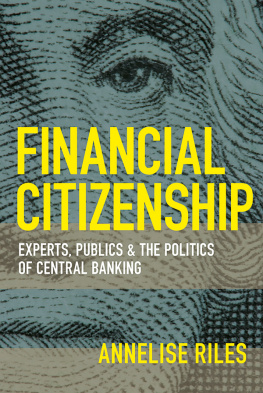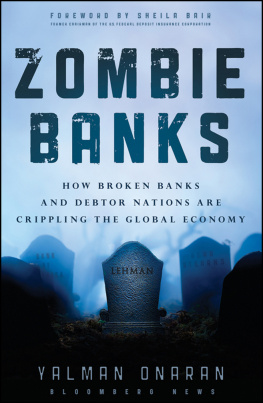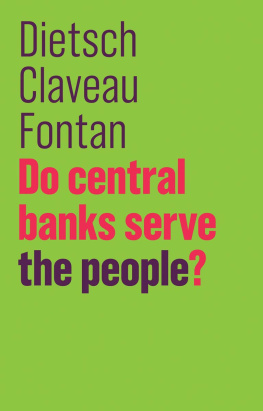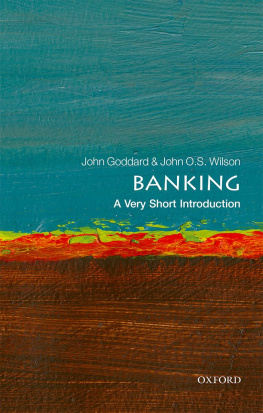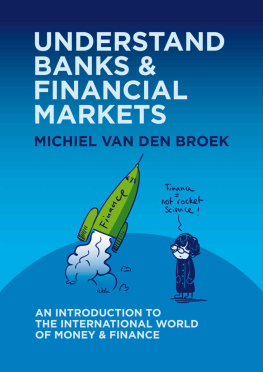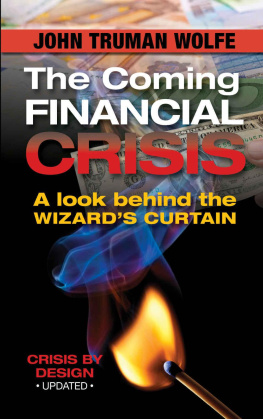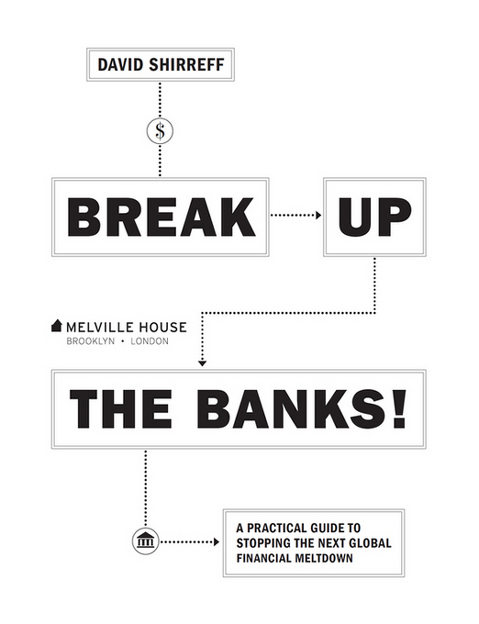BREAK UP THE BANKS!
Copyright 2016 by David Shirreff
Melville House Publishing
46 John Street
Brooklyn, NY 11201
and
8 Blackstock Mews
Islington
London N4 2BT
mhpbooks.com facebook.com/mhpbooks @melvillehouse
ebook ISBN: 978-1-61219-503-2
Design by Marina Drukman
v3.1
When the capital development of a country becomes a by-product of the activities of a casino, the job is likely to be ill-done.
JOHN MAYNARD KEYNES ,
The General Theory of Employment, Interest and Money
CONTENTS
Introduction
THE NEED FOR MORE RADICAL REFORM
This is a call for revolutiona revolution to reduce complexity in global banks, to split them into manageable chunks, and to change the self-serving nature of the culture that dominates them.
These recommendations are not plucked out of the blue. They represent a reasonable course of action, given the mess that finance has gotten itself into over the past two decades. That mess is the subject of the first part of this book. There have, of course, been many accounts of the origins of the 2008 financial crisis, but Id argue that its a story that cant be retold too many times. To understand where to go, we first have to understand how it is that we got here.
Most of the remedies that I offer in the second part of this book have already been hinted at, sporadically, by many commentators, but usually without being fashioned into a coherent plan. In the years since the initial, post-crisis burst of enthusiasm, financial-sector and banking reform has lost its way, though it seems to be stumbling, half-blind, toward the solutions you find here. This is an attempt to speed up that process.
Before the financial crisis, discussions of financial reform were inevitably marginal; there was no crisis, so public awareness of the issues was limited. Financial reform was technical, its real-world consequences little understood.
But since 2008, reform hasbelatedlybecome a topic of widespread attention. What was once the province of academic articles and the occasional op-ed column is now mainstream. The United States, the United Kingdom, and Europe have tussled with reform over the past few years with varying degrees of ambition, earnestness, and efficacy, but no one thinks weve seen the end of it. (Other than bankersbut then, everyones entitled to his fantasies.)
This is not a radical book. At least, it shouldnt be: Break Up the Banks! is concerned with pragmatic ideasnot punitive or utopian ones. Still, for many, the measures that I am proposing might appear somehow beyond the pale. What I would argue, in response, is that fear of being radical has led to the situation we are in today.
Since 2008, an extraordinary amount of money has been devoted to recapitalizing and strengthening bank balance sheets in the interest of protecting the financial systemand thus the global economy. But the effect of this investment has been to sustain a sector that is still failing to serve the real economy efficiently. Instead of the banking and financial sectors being reformed to serve the real economy, much of the value added by the real economy is still being hoovered up by the banking system. This approachand the assumptions that bolster ithas to change. I hope that Break Up the Banks! can contribute to that change.
MISSION CREEP
Big Bang and the Lifting of Glass-Steagall
Banks have always been dangerous, and thus have always been bound by rules and regulations of varying degrees of intensity. A bank, after all, is nothing without the laws that allow it to exist. But in the 1980s and 90s, laws that governed the scope and scale of banks were substantially liberalized. This liberalization happened in a number of other industries (the landscape of American airlines before and after the late 1970s is a good example of how dramatic these changes were), but the impact on banking was probably the most consequential in terms of global politics and the structure of society. In a rather short span, many of the laws that had kept banks from becoming too big and too dominant (and thus too dangerous) were deemed outmoded. Deregulation was in.
In Britain, the turning point was Big Bang. On October 27, 1986, banks were allowed to deal directly in securities and on the London Stock Exchange. Suddenly, banks based in Britain could provide all types of financial services to a broad range of clients. And stockbrokers and stockjobbers (market makers in securities)which had been kept strictly separatecould now be bought by and integrated into banks that would soon grow bigger than ever.
In the United States, the 1999 Gramm-Leach-Bliley Act effectively repealed the Glass-Steagall Act of 1933, which had enforced the separation of investment banking from commercial banking activity. Glass-Steagall was hugely important: it was nothing less than Americas answer to the near-failure of the financial system. Gramm-Leach-Bliley was equally important, but in the inverse. It paved the way for giant universal banks that could use the stability of their retail deposits to take bigger and bigger bets on the wholesale credit, securities, and derivatives markets. That turned out to be a recipe for disaster.
Financial Engineering: Useful Instruments Become Self-Serving
In their early days, financial derivativesproducts whose value is determined by the variation in price of a traded itemserved a real purpose as an insurance or source of protection against future price movements. For instance, trading of interest-rate futures on the Chicago Mercantile Exchange and the invention of interest-rate and currency swaps met a genuine customer need. These products offered simple solutions to complex financial problems.
Swaps, to take one example, replaced complex back-to-back loans made by pairs of companies in different currencies or different markets: an American company wanting a source of Japanese yen could swap its own fixed-rate debt in dollars for a Japanese companys floating-rate debt in yen. The companies could then settle the difference in each others obligations without the extra trouble and expense of raising finance in a foreign currency in which they were not well-known borrowers. Once swaps caught on, they greatly widened companies access to finance in different markets.
But by the 1990s, the rewards that arrangers could earn for being the first to create a more and more complex financial product were simply too tempting. This put a premium on complexity and opacity. Perhaps the apogee of this era was the creation of the quanto swapnothing more than a bet on the future difference between short-term and long-term interest rates in a pair of currencies and the exchange-rate risk between them. The quanto swap had no conceivable economic relevance for the buyer.
Libor Squared was anothera swap based not on a simple interest rate, Libor, but on its square. Libor Squared amplified modest changes in the rate and increased risk and volatility. This might have been clever, but again, what was the point? What was the economic purpose of such a transaction?
In the post-deregulation age, these audacious but pointless tricks became the norm, rather than the exception.



